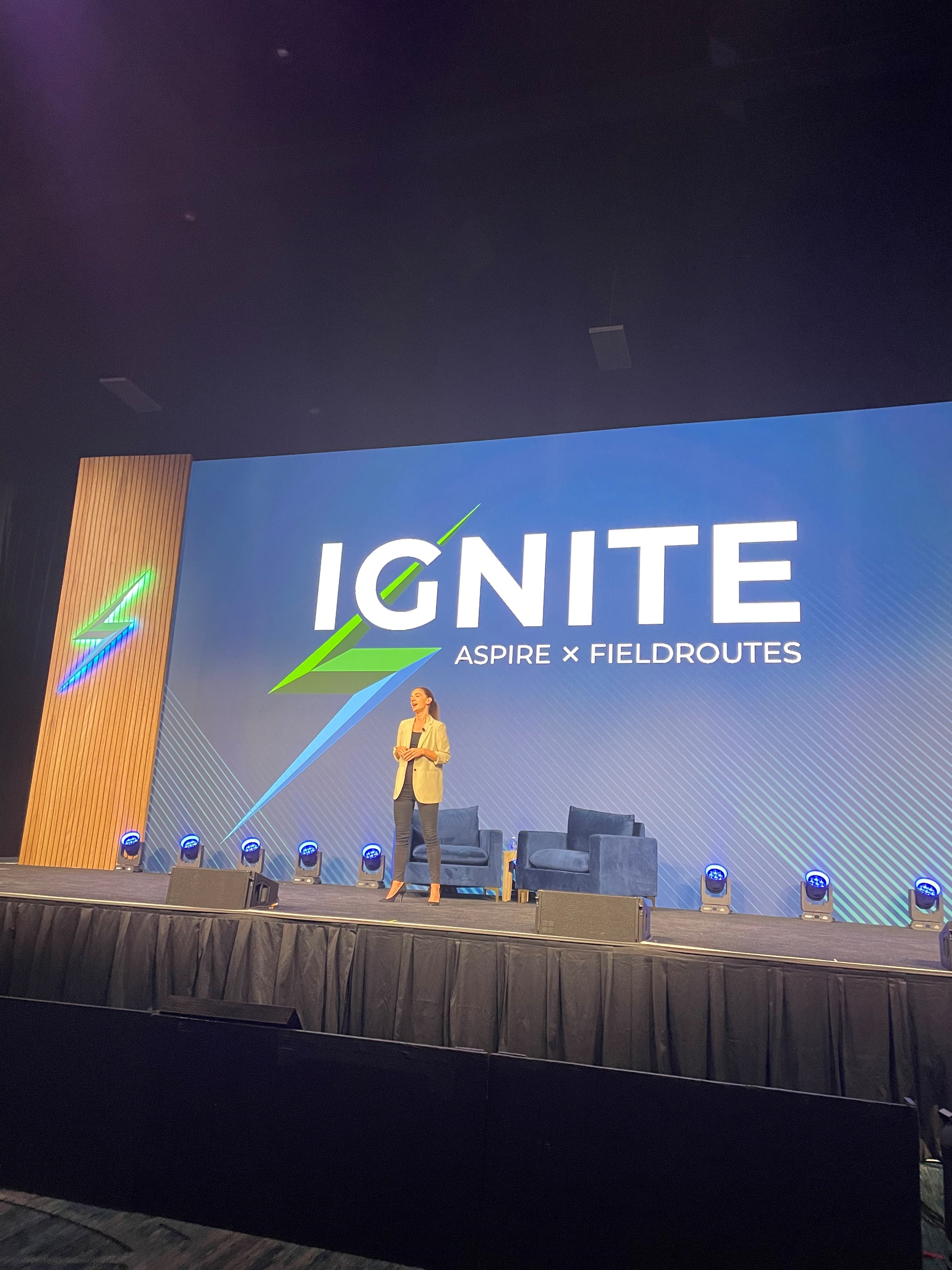
Brian Horn
During the opening panel at Aspire's recent Ignite event, host Jon Gohl — the director of customer experience at Aspire — asked Britt Wood about misconceptions people have about the industry.
Wood, executive director of the National Association of Landscape Professionals, recalled a recent NALP field trip to Washington DC with more than 40 representatives from the Environmental Protection Agency.
The point of the field trip was to show the EPA how professionals apply lawn care products. He said the representatives were surprised at how professionally the pesticides and fertilizers were applied. With many not realizing the professionalism of the industry, Wood urged the audience to realize how much education a green industry professional can provide the public.
“Stop being so humble; you do amazing stuff," Wood says. “You may think it’s boring, but they are very interested. Brag about what you do.”
Here are some other takeaways from the event, which Aspire and Field Routes hosted in Orlando last week.
Continuous improvement. During the panel, Shandra Brando, the COO of Heritage Landscape, said getting buy-in for a software installation isn’t about you selling employees on it — it’s about helping them understand their role in the implementation and explaining to everyone why the company is making this change.
She also says you can't slow down after the software is installed — the learning should continue.
“It never stops,” she says. “You are always implementing it.”
Wood also reminded the audience to lead thoughtfully and never get comfortable. Having previously worked in the retail industry, he told a story about doing an interview with a national newspaper about self-checkouts being placed in stores. He says the interview was going great until the last few minutes when he got comfortable.
The reporter asked him a question about the machines succeeding in the future and he responded that the machines aren’t cheap, so they better work. You can guess what was highlighted in the story. “Don’t get comfortable,” Wood says. “Stay on your mission.”
Questions and more questions. When Kat Cole was 9 years old, her mother made the decision to leave her husband and Kat’s father, who was an alcoholic. Cole, who kicked off the final day of the event, says her dad, who has now recovered, was arrested twice for drunk driving with her in the car. When Cole’s mom told her they were leaving, Cole said “what took you so long?”
Not quite the reasoned reaction one might expect, so it’s no surprise Cole has gone from a Hooter’s restaurant hostess to a successful CEO. Cole is now CEO of AG1, formerly Athletic Greens, but also led the turnaround of Cinnabon in the early 2010s.

Cole applied a business lesson to her mom not leaving her dad sooner. She says that the people closest to an action know what to do sooner than the leader, but the leader has so many more considerations.
“People close to action lack language to articulate the full problem or solution and they don’t have the authority to make a wholesale change,” she says.
Cole climbed the ladder from hostess to helping owners open new Hooters restaurants all over the county. After opening a restaurant, she would apply her "Make My Day Difficult" approach. She would ask employees what made their day difficult, look for patterns and then try and fix the most commonly mentioned. Cole adds now that she established a culture where employees felt comfortable responding honestly. This meant employees could tell her that Cole was doing something to make their days difficult, too.
She asked a series of questions when she helped turn Cinnabon around during the Great Recession. Cinnabon was in malls and airports, and during the recession, people weren’t travelling or flying as much as they did before the recession. Cinnabon took a hit.
She would ask store owners, "What’s one thing we should stop doing to make the business better, what’s one thing we should start doing and what’s one thing you would do differently?" She would also dig deeper and ask them what they have to say no to a lot. That means customers want something they don’t offer. Overall, Cole says the more you communicate with people, the more open they will be to giving you feedback.
“Confront reality…sometimes employees don’t see it like you,” she says.
Create relationships. In his presentation on frontline leadership, Jared Woodend, chief operations officer/integrator at Decra-Scape in Detroit, talked about getting to know employees better to figure out how they want to be led.
“Understand your role, your direct reports and team alignment with overall company goals," he says. "Understand them on personal level to connect their why to company’s why."
He says when delegating as a leader, follow four steps: tell, show, do and review. You can show them how to do it, and then do it as an example, but he adds that review is often missed which can create a situation where the employee could be doing it wrong, but doesn’t know it.
“You will see drastically better results,” he says of following the four steps.
Latest from Lawn & Landscape
- Visterra Landscape Group acquires Cleveland-based H&M Landscaping
- SiteOne names Carrothers VP of agronomic business development
- Batman and business
- Ever-changing landscape of SEO
- Fleetio acquires Auto Integrate, raises $450M in Series D funding
- Davey Tree expands in St. Paul, promotes Ostlie to district manager
- Schill Grounds Management taps 3 for senior leadership roles
- HD Hyundai Construction Equipment North America adds to wheeled excavator lineup






